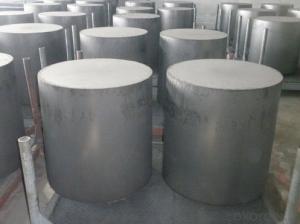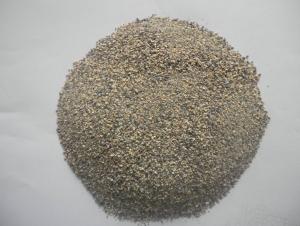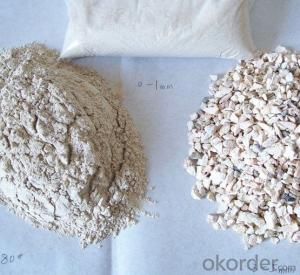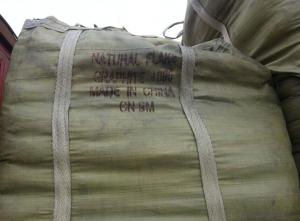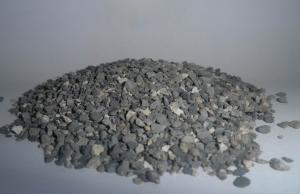High Carbon Graphite Round Products - Raw Materials for Refractory
- Loading Port:
- Shanghai
- Payment Terms:
- TT OR LC
- Min Order Qty:
- 500 m.t.
- Supply Capability:
- 2000 m.t./month
OKorder Service Pledge
OKorder Financial Service
You Might Also Like
Graphite block,as one of the most important graphite products, is widely used in such field as metallurgy, mechanical, electronics and chemical industry and so on. It is Vibration-molded or extruded, carbonized and graphitized under precise technical control.
1.Typical Featuring Characters:
Higher mechanical strength,easy sliding,stronger heat and chemical stability,
Well function in anti-shock and anti-corrosion,heat/electric conductivity.
Easy to be machined,etc
2. APPLICATION
Used in industries like metallurgy, chemistry,electronics,building constructions,nuclear energy,bearings,EDM,semiconductor,mold-sintering devices,etc
3. GRAIN SIZES 0.8MM,2.0MM,4.0MM,8.0MM
4.Graphite Block Round Dimensions (mm)
ø 600*2000; ø 700*2000; ø 800*1800;
580*540*3000;600*200*3000;600*200*2500;
1300*520*160; 1200*500*300;1300*520*160; 1200*500*300;
1300*520*160; 1200*500*300;
5. Some Properties: Graphite block Carbon block Graphite round Isostatic graphite block
Bulk Density: ≥(g/cm³) 1.80 Ash: ≤(%) 0.39 Compressive Strength: ≥(Mpa) 80
Flexural Strength: ≥(Mpa)45 Grain Size: ≤ 8.0 CTE (10-6/°C) : 2.9 MAX.
Resistivity: ≤11μΩm F.C.:98% min
- Q: How to determine the fire resistance rating of the aluminium-plastic?panel?
- The fire resistance rating of the aluminium-plastic?panel is determined by two indicators, namely national compulsory standard of GB8624 "Building Materials Combustion Performance Grading Method ", and GB/T17748 "Aluminium-plastic?Composite Panel National Standard" . Classifications of combustion performance of building materials in our country are as follows: A class: Incombustible building materials; B1 class: Flame-retardant building materials; B2 class: combustible building material; B3 class: flammable building materials. The fire resistance rating of the aluminium-plastic composite panel shuld be no less than B1 class. 1. Detection indexes and requirements of fireproof aluminum-plastic composite panel (B1 class): (1) Conduct the test according to GB/T8625-88, the average leftover length of each test specimen should be more than 150mm, (any test piece should have leftover length), and the maximum average flue gas temperature of each test should be no more than 200 ℃; (2) Conduct the test according to GB/T8626-88, flame hight indicators.
- Q: What is the type of heat resistance property of high temperature electric furnace ?
- According to the levels of refractoriness : Common refractories: & Gt: 1580 ℃ ~ 1770 ℃ advanced refractories: 1770 ℃ ~ 2000 ℃ AAA refractories; 2000 ℃
- Q: Which brand of refractory fiber hard thermal insulation board is better?
- Thermal insulation materials are divided into two types: porous material and heat reflecting material. The former uses the air void contained in the material to maintain thermal insulation itself for the heat conductivity coefficient of air or inert gas within the voids is low, such as foam material, fibers and other materials; the latter material has a high coefficient of reflection which can reflect the heat, such as gold, silver, nickel, aluminum foil or metallic coated polyester and polyimide thin films. Aerospace industry has strict requirement for the weight and volume of thermal insulation material, and it is often also required to has the properties of noise absorption, vibration attenuation, and anti-corrosion. Different aircrafts have different requirements for thermal insulation materials. Aircraft cabin and cockpit usually use foam, ultra-fine glass wool, high silica cotton to maintain thermal insulation. Earlier missile head uses phenolic foam plastic as thermal insulating material. With the application of polyurethane foam with good thermal endurance, the single insulating material has been developed to sandwich construction. A few millimeters foaming coating is coated on the skin outside the missile instrument bay, it is anti-corrosion coating at room temperature and when aerodynamic heating reach 200 ° C or more, it will generate foam evenly thus maintaining thermal insulation. Artificial earth satellite moves in an environment where the temperature varies from high to low, so it must use laminated thermal insulation material with high reflecting performance, which is usually made up of dozens of layers of aluminum film, aluminized polyester film, and aluminized polyimide film. In addition, the successful development of the surface thermal insulated tiles has solved the problem of thermal insulation of the space shuttle, it also marks a higher level of development of insulation materials.
- Q: What are the types of steel refractory materials
- Large steel ladle usually made with magnesia carbon brick, of course, it contains a intermediate layer (such as good a little high alumina castable), heat insulation layer and heat preservative materials Alumina-magnesia castable is OK for small steel ladle
- Q: What is refractory cement?
- Ordinary portland cement is common cement with relatively high early strength, while refractory cement is low in this regard. Refractory cement is a characteristic cement which can only be used in special projects, not suitable for general engineering. And in the winter, it is not suitable for construction use.
- Q: Do you know where I can buy refractories?
- A Address of Guangzhou Lingnan Refractories Co., Ltd. : No.1069 Guanghua 1st Road B Address of Guangzhou Aolian Refractories Co., Ltd. :
- Q: How many levels are there in the classification of PP fireproof materials?
- PP fireproof materials level V-0: After two 10-second fame tests on the sample, the flame extinguishes within 30 seconds. Inflamer can not drop. V-1: After two 10-second flame tests on the sample, the flame extinguishes within 60 seconds. Inflamer can not drop. V-2: After two 10-second flame tests on the sample, the flame extinguishes within 60 seconds. Inflamer can drop.
- Q: Who knows about the B-level fireproof insulation materials?
- Commonly used B-level materials: Molding polystyrene foam, extruded polystyrene board, gelatine powder polyphenyl granule heat insulating slurry. Although the polyurethane is not the commonly used material, but the 9mm composite of monolayer gypsum board and PU insulating material can reach B-level.
- Q: what materials can make external wall fireproofing paint have the fireproofing effect
- First, the width of fire barrier is greater than 30CM, and the thickness should be same to the thickness of insulation material. fire barrier zone insulation board must do the whole area sticking construction with the base wall during the construction. fire barrier zone insulation board is required to assistant binding by anchor bolt, anchor bolt must suppress the underlying mesh. fire barrier zone should be set at the upper position of door and window openings, the distance between the low edge of isolation belt and the upper edge of the window must be less than 50cm. When the fire barrier zone is set on the edge of the window, fire barrier zone at the upper part of the window should do flanging when sticking, flanging glass fiber mesh must exceed 10CM than firebreak insulation board. flanging network, underlying network and surface network can not be overlapped or butted at the top of the window. the thermal resistance of fire barrier zone must be half than EIFS thermal resistance in the cold northern areas, while the thermal resistance of fire barrier zone must be three times than EIFS thermal resistance in the hot summer and cold winter area. Cement foam insulation board is recommended to use as external insulation board materials, level A exterior wall cement foam insulation board is a new ultra-lightweight thermal insulation material, with the advantages of lightweight concrete and insulation performance, with characteristics of low production costs, simple process, easy to operate, small product density in 180250kg / m3, high strength, low water absorption and good insulation properties, thermal conductivity of 0.05 ~ 0.07W / m · K and level A non-combustible; it is suitable for external wall insulation and fire isolation belt, and can meet the urgent needs of the market of exterior thermal insulation. With the increase of the intensity of the building fireproofing, the products will become the leading products in building insulation market in the future.
- Q: Where is the development of refractory industry?
- The rapid development of continuous casting technology of its related @ China @4 honing refractories develop and increase in variety and quality, continuous development of refractories for the continuous casting billet continuous casting production and quality have a significant impact. Especially, the completion and operation of Baosteel have greatly promoted the technological progress of refractory materials in China, and the refractory materials for continuous casting have made great progress both in variety and in quality.
Send your message to us
High Carbon Graphite Round Products - Raw Materials for Refractory
- Loading Port:
- Shanghai
- Payment Terms:
- TT OR LC
- Min Order Qty:
- 500 m.t.
- Supply Capability:
- 2000 m.t./month
OKorder Service Pledge
OKorder Financial Service
Similar products
Hot products
Hot Searches
Related keywords
